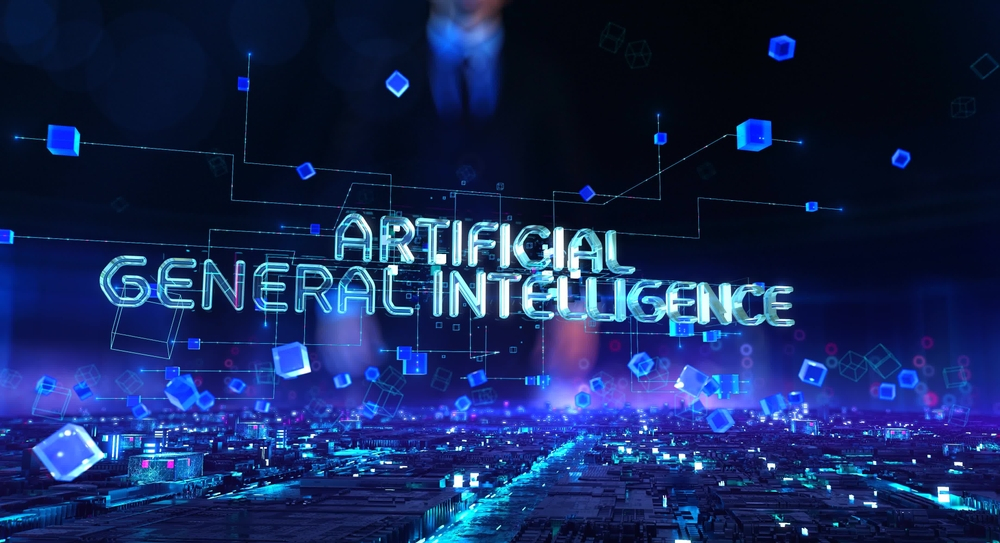Highlights:
- Artificial general intelligence aims to replicate human-like general intelligence, allowing machines to understand, learn, and apply knowledge across diverse contexts.
- AGI-powered robots and vehicles could navigate complex environments, adapt to changing conditions, and make real-time decisions.
Artificial Intelligence (AI) has witnessed remarkable advancements, so much so that they outperform humans in specific tasks. However, accurate human-like intelligence, called Artificial General Intelligence (AGI), remains a futuristic goal that continues to captivate the imagination of researchers, scientists, and tech enthusiasts.
AGI represents the pinnacle of AI development, offering the potential for machines to possess cognitive abilities akin to human beings, understand context, learn new skills, and adapt to various situations independently. We’ll propagate unwinding the concept of AGI, its significance, challenges, and the transformative impact it could have on the digital and industrial world.
With the triggering introductory glimpse, let’s open with the conceptual understanding of AGI, further sequencing through examples and applications.
What is Artificial General Intelligence?
AGI, or strong AI or full AI, represents the next level of AI capability. It would be able to reason, plan, solve problems, and adapt to new situations, just like a human being. At its core, AGI refers to a level of artificial intelligence with human-like general intelligence. Unlike current AI language models, which are designed for specific tasks and domains, AGI aims to create machines capable of understanding the world holistically, reasoning, learning from experience, and applying knowledge across diverse contexts.
AGI systems would not only perform individual tasks but have the versatility to learn new tasks without human intervention. AGI and its true potential can be better understood with the vivid implications that it assures to serve.
Examples of Artificial General Intelligence
The development of AGI carries profound implications for various fields and industries. Its potential impacts include:
-
Problem-Solving Powerhouse
AGI could revolutionize scientific research, medicine, and engineering by offering unprecedented problem-solving capabilities. From drug discovery to climate modeling, AGI’s abilities to analyze vast datasets and simulate complex scenarios could accelerate progress significantly.
-
Personalized Education
AGI-driven education systems could personalize student learning experiences, adapting to individual learning styles and needs. This could lead to more effective and efficient education, bridging knowledge gaps and nurturing each student’s unique talents.
-
Automation and Economy
AGI’s potential to excel at multiple tasks could lead to increased IT infrastructure automation across industries. While this may boost productivity and efficiency, it also raises concerns about job displacement and the need for a reimagined workforce.
With the acquaintance of AGI examples, let us hover over the comparative analysis of AGI and its predecessor.
Artificial General Intelligence Vs. Artificial Narrow Intelligence
Artificial Narrow Intelligence (ANI) and Artificial General Intelligence (AGI) represent two distinct levels of artificial intelligence. ANI refers to AI systems that are specialized and excel in performing specific tasks within a limited domain. Examples include virtual assistants and recommendation algorithms.
On the other hand, AGI aims to replicate human-like general intelligence, allowing machines to understand, learn, and apply knowledge across diverse contexts. AGI would possess the versatility to learn new tasks without human intervention, a feat not yet achieved.
While artificial narrow intelligence has already made significant advancements in practical applications, AGI remains a future goal, captivating researchers worldwide due to its potential to revolutionize various industries and profoundly impact society.
This distinctive analysis exemplified how AGI is advancing. However, the comparison with the successor will be precisely helpful in understanding its limitations and growing areas.
Artificial General Intelligence Vs. Artificial Superintelligence
Artificial superintelligence and artificial general intelligence represent two distinct levels of artificial intelligence. AGI refers to AI systems with human-like general intelligence, enabling them to understand, learn, and adapt to various contexts independently. AGI can perform a wide range of intellectual tasks and learn new skills without human intervention.
Regarding AGI vs. ASI, ASI goes beyond AGI, representing generative AI systems with cognitive abilities far surpassing human intelligence. ASI would be capable of self-improvement and achieving outcomes beyond human comprehension. While AGI is a current goal in AI research, ASI remains theoretical and speculative, sparking debates about its feasibility, implications, and potential risks if not adequately controlled.
After the comprehensive comparison with previous and later phase technologies being understood, the segment unfolds the varied use cases of AGI serving multiple industries.
Applications of Artificial General Intelligence
1) Healthcare
AGI can potentially revolutionize healthcare by accelerating medical research, diagnosis, and personalized treatments. With its capacity to analyze vast amounts of medical data and understand complex relationships, AGI could help identify patterns in patient data and predict diseases at early stages.
AGI-powered virtual health assistants could also provide personalized health advice, ensuring patients receive timely and accurate information.
2) Climate Change and Environmental Management
AGI’s analytical capabilities could process vast environmental datasets, helping scientists and policymakers understand the intricacies of climate patterns and human impact on the planet. This knowledge could lead to more effective strategies for mitigating climate change, optimizing energy usage, and conserving natural resources.
Additionally, AGI could assist in disaster response and planning by quickly assessing the impact of natural disasters and helping coordinate relief efforts.
3) Autonomous Systems
AGI demonstrates the general learning model in artificial intelligence. It could enable the development of highly advanced autonomous systems across industries such as transportation, logistics, and manufacturing. AGI-powered robots and vehicles could navigate complex environments, adapt to changing conditions, and make quicker decisions.
This could lead to more efficient and safe transportation, streamlined logistics operations, and optimized manufacturing processes.
Although serving numerous industrial and digital applications, AGI finds it tedious and daunting to execute certain inherent functions.
Challenges of Artificial General Intelligence
Despite featuring immense promising nature, AGI development faces significant challenges:
-
Learning and Adaptation
AGI features general problem-solving in artificial intelligence. However, creating machines that can learn and adapt like humans is a cumbersome task. Current AI systems rely on extensive data, while humans can generalize and learn from just a few examples.
-
Safety and Control
AGI’s unprecedented capabilities could lead to unintended consequences if not properly controlled. Ensuring AGI’s safety and responsible deployment is paramount to avoid potential risks.
-
Computational Power
AGI demands massive computational resources to simulate human-like intelligence. Developing hardware and software capable of handling such complexity poses a considerable challenge.
Summing Up
Artificial general intelligence represents the culmination of human ingenuity, pushing the boundaries of AI research and its applications. While AGI remains a tantalizing future vision, we must approach its development thoughtfully and ethically.
The realization of AGI will undoubtedly shape society in unprecedented ways, offering transformative opportunities alongside profound challenges. As we continue the quest for quantum artificial intelligence, let us remember that the goal is not just to build intelligent machines but to create technology that benefits the digital domain.
Explore more technology-related whitepapers and associated content for the latest insights.





























































